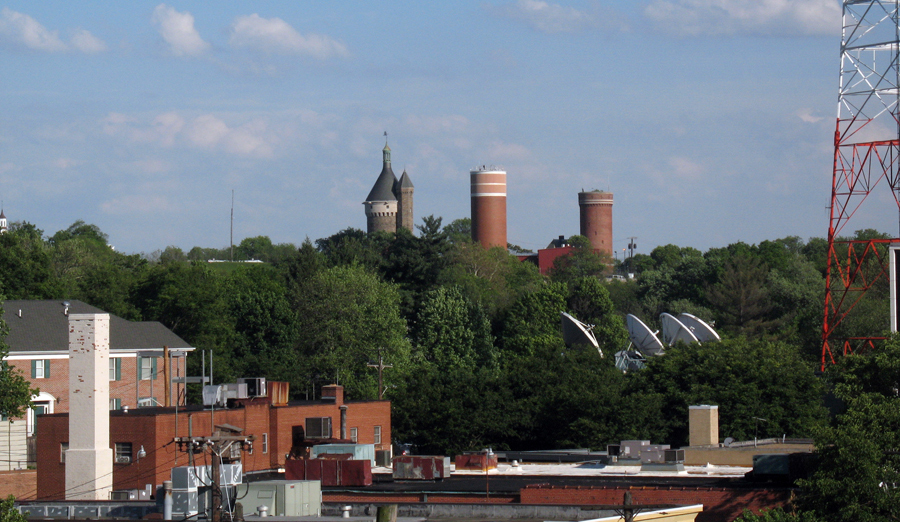
It’s been a while since I looked at Tenleytown’s history, but I came across this map on Wikipedia. It shows the changes proposed in 1902 by the McMillan Commission to the Permanent Highway Plan. Meant to make DC more befitting a national capital, it generated several key ideas that would change Tenleytown, beyond its integration into the suburbs:
- A park on the site of Fort Reno / Reno Town. The circular parkland shown in the upper left-hand corner radiates out a quarter of a mile from the original point of greatest natural elevation. This is now obliterated by the water tanks. Reno Town certainly still existed at this time, but the political maneuvering that erased the black community from Tenleytown hadn’t begun. It’s possible that Sen. McMillan was collaborating with Sen. Newlands, the founder of Chevy Chase, to suggest this, but I have no proof.
- The Fort Circle Parks system appears here for the first time. The country was beset by nostalgia for the Civil War at the time, so it’s not surprising that the planners decided to commemorate those events with a set of parks that incorporated the former sites of the forts that protected Washington during the war. This plan would undergo many revisions, slowly becoming more of a highway until it died in the early 1960s.
- Yuma street is depicted as a parkway, running from the daylight of Murdock Mill Creek, into Soapstone Valley. Very little evidence for this idea remains. Principally, Yuma’s right of way is slightly wider than the surrounding streets.
I have seen this map in person at the Washington Historical Society, and there are lots of fascinating details. I will try to get a larger upload, but enjoy this for now.
